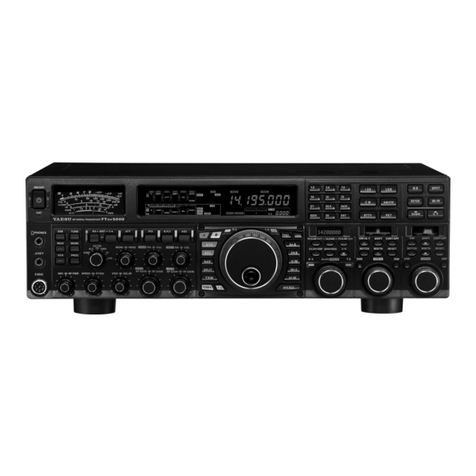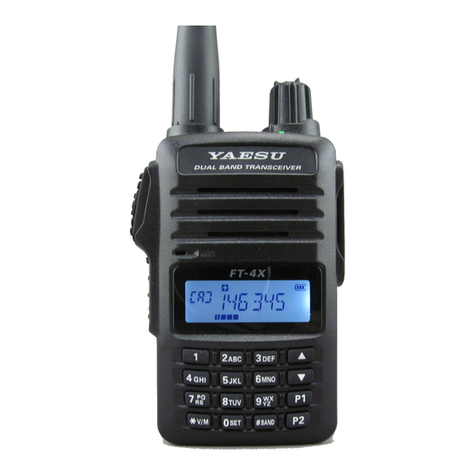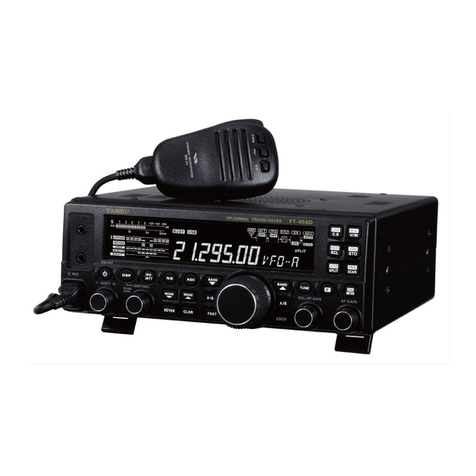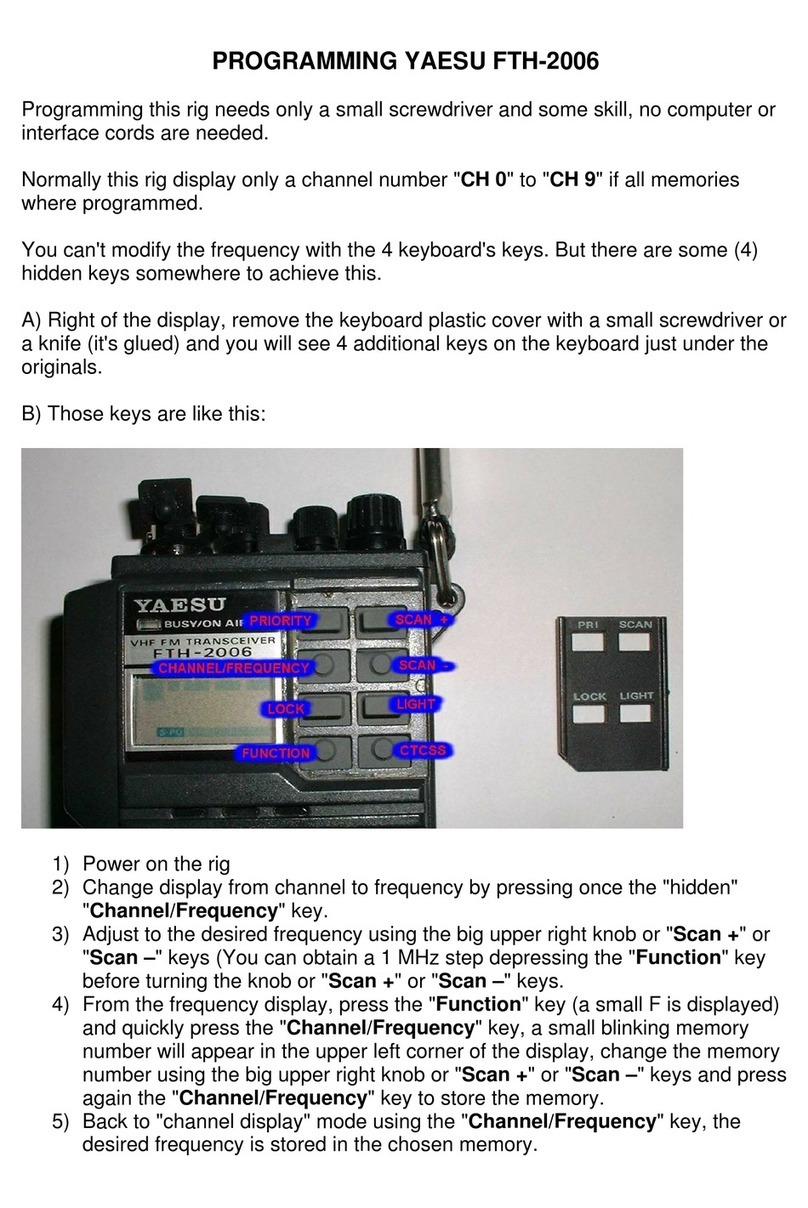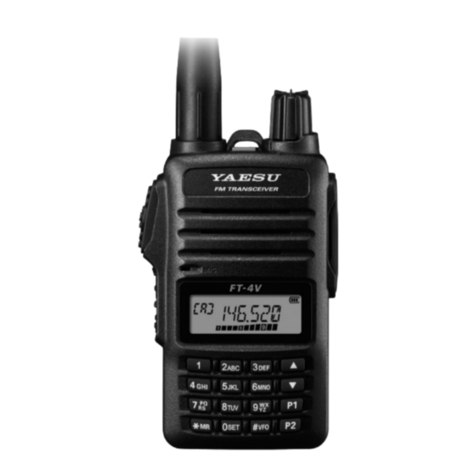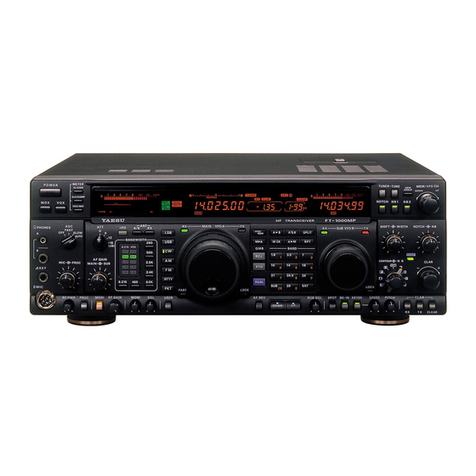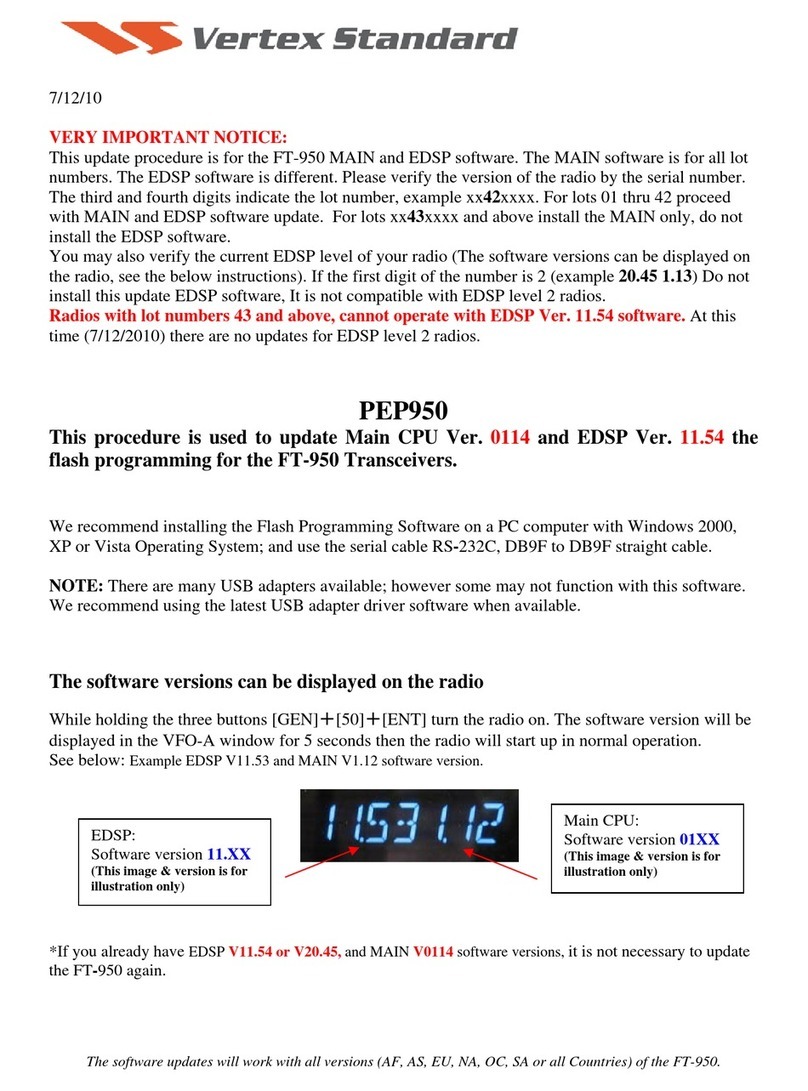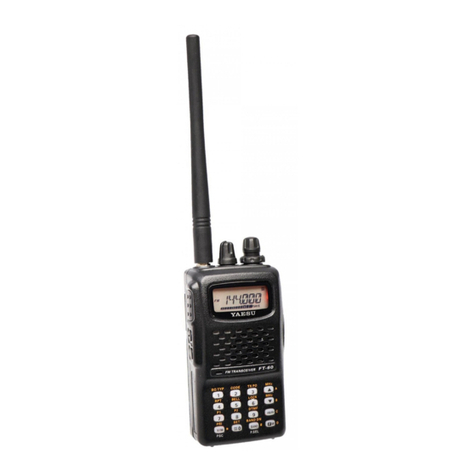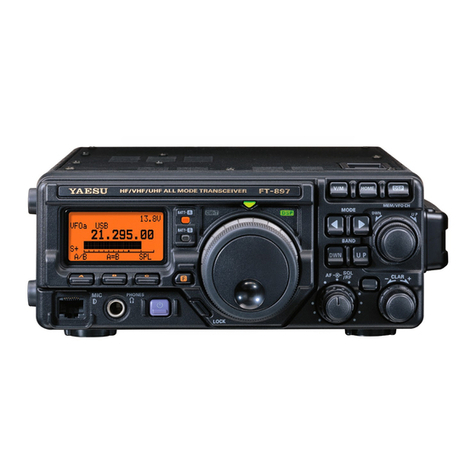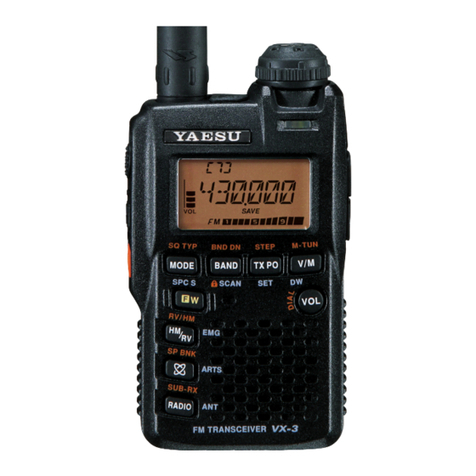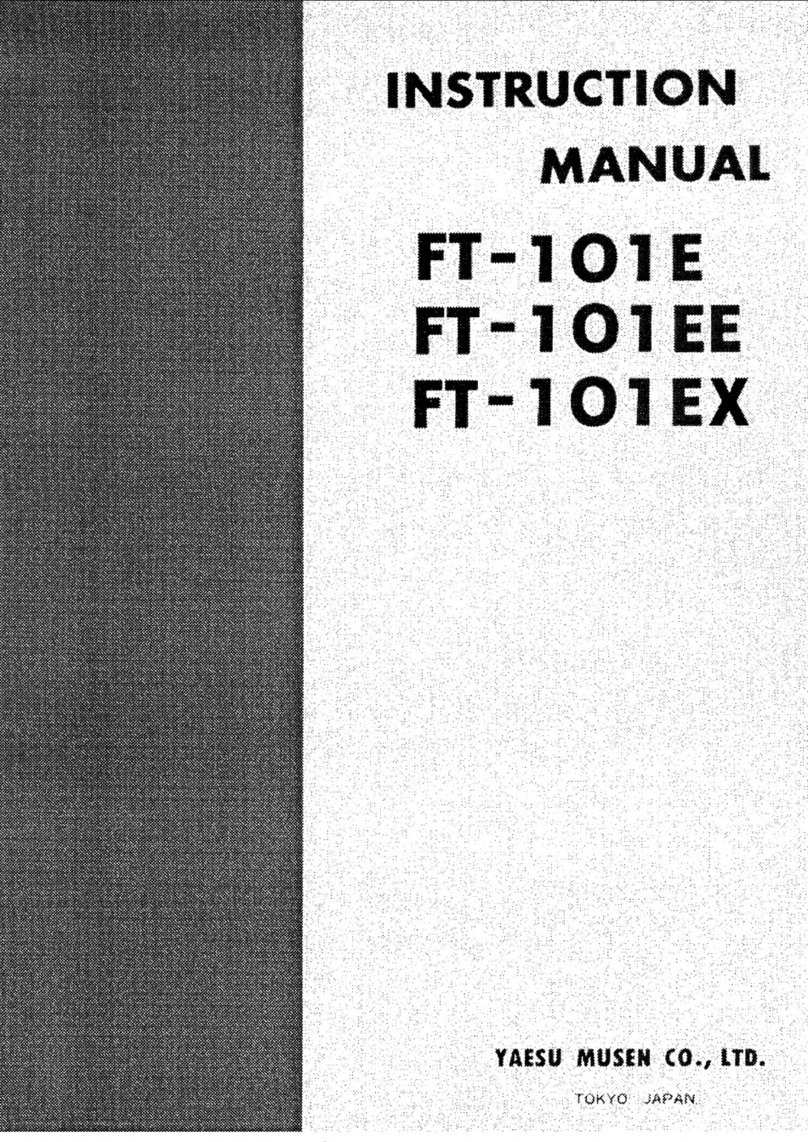
Introduction..................................................... 2
Quick Guide .................................................... 3
Controls & Connections ................................ 4
Transceiver .................................................... 4
Operation Keys.............................................. 5
Changing the Transceiver settings................ 5
Touch Screen Display ................................... 6
Safety Precautions (Be Sure to Read)........ 12
Supplied Accessories and Options ............ 15
Supplied Accessories.................................. 15
Available Options......................................... 15
Preparation.................................................... 16
Installing the Antenna.................................. 16
Installing the Battery Pack .......................... 16
Attaching the Quick Release Holster .......... 16
Attaching the Belt Clip................................. 16
Charging the Battery Pack........................... 17
Charging the Battery Pack using
the Battery Charger (SAD-25)... 17
Charging the Battery Pack using
the Rapid Charger (CD-41) ... 17
External Power Supply................................. 18
Connecting an External Power Supply
for Use in a Vehicle ... 18
Connecting to an External Power Supply
Using a Power Cable... 18
Using a microSD Memory Card................... 18
Usable microSD Memory Cards ................. 18
Mounting and Dismounting
microSD Memory Card...... 18
Formatting a microSD Memory Card.......... 19
Operation....................................................... 20
Turning the Transceiver ON ........................ 20
Adjusting the Volume Level......................... 20
Adjusting the squelch setting ...................... 21
Toggling the Operating Band ...................... 21
Selecting a Frequency Band .......................22
Tuning to a Frequency.................................22
Changing the Frequency Step..................... 23
Selecting the Communication Mode........... 23
Transmission ............................................... 24
Changing the Transmit Power Level ........... 25
Locking Keys and DIAL knob ...................... 25
Using the convenient Digital C4FM feature
... 26
About the Digital Group ID (DG-ID) feature
... 26
Communicating with the DG-ID feature...... 26
Repeater Operation ...................................... 29
Communicating Via the Repeater............... 29
Using the Memory ........................................ 30
Registering to Memory Channels................30
Recalling a Memory Channel...................... 31
Recall only memories in the same frequency
band (Band) using the
memory auto grouping (MAG) function....... 31
Clearing Memories ...................................... 32
Restored erased memory............................ 32
Using Memory Tag ...................................... 32
Recalling the Home Channels.....................33
Changing the Home Channel Frequency....33
Memory Channel List .................................. 33
Split Memory ............................................... 33
Using Memory Bank....................................33
Memory Only Mode .....................................33
PMG (Primary Memory Group
Activity Monitor) ........... 34
Register the frequency with PMG ...............34
Touch the bar graph to switch the frequency
... 35
Unregister the channel (frequency)
registered in PMG..... 35
Disable the PMG function ........................... 35
CAM (Channel Activity Monitor) function ... 36
Register memory channel to CAM group.... 36
Using the CAM function ..............................38
Touch the bar graph to switch the frequency
...38
Change the displayed CAM group .............. 38
Delete a registered memory channel
from CAM group ...39
Delete all the contents
in the CAM group at once............... 40
Changing the name (tag) of CAM group ..... 40
Disable the CAM function............................ 41
Band Scope................................................... 42
Scanning Function ....................................... 43
VFO Scan ....................................................43
Memory Channel Scanning......................... 43
Setting the Receive Operation
When Scanning Stops........ 44
Weather Alert Scan .....................................44
Skip Memory Channels, and
Specied Memory Channels...........45
Programmable Memory scan (PMS)...........45
Dual Receive (D.RCV) feature ....................45
Convenient Functions.................................. 46
Bluetooth®Operation...................................46
VOX Operation ............................................ 50
Convenient Preset Receiver
Memory Channels ............. 52
Using the Voice Recording.......................... 56
Taking Pictures (Snapshot Function) ..........58
Contents
